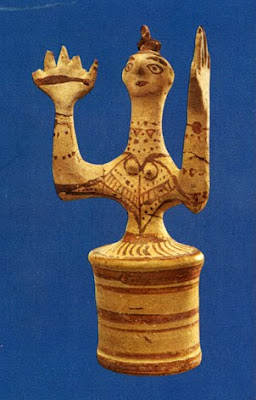i like the looks for that “w”
it looks human, arms in orans–a word i learned yesterday. orans looks like this:

i have started to use this posture in my morning prayer, it feels good. what didn’t feel good was slogging through this chapter–it felt interminable. i was intrigued by the blending of permaculture and magic, i appreciate the living practice. but i have a very hard time finding a through line, a structure, a plot. and so my mind strays. better to use Meredith’s strategy, random fragments of ideas in my response.
i’m looking back at what i underlined in pencil in Chapter 6: The Farm at the End of the World. i underlined:
…a tendency to fall into a cult of origins which is out of step with a universe that is continually forming.”
– Gordon White, p. 172
this really spoke to me. i didn’t just “come from” my mother and father. i come from all the people who shaped my existence, now, and in the past. i come from bacteria and Little Debbie snacks, from childhood friends and beloved toys, from failed soccer games and murky canal water. i come from a country far away, i come from longing and anger. how is that an origin? it is not. i (be)come. i spent too many years searching for that “root cause” of a personal struggle. many experiences seemed to “reveal” the original issue that i had to face and sit with: self-reflection, talking to God, taking a drug, crying to a friend. and while some of these moments helped me address the issue, no stable original sin could be identified. how is the issue sitting in my psyche now? and how to break the notion of now, so that it is a continuous, living experience… seeking origins, or the first this-or-that, can be a useful endeavor. it is not the only path.
the only other key idea i underlined was a list of crop plants domesticated by First Nations people in North America: goosefoot (i think i know it as lamb’s quarters), little barley, marsh elder, maygrass. i want to eat them. in their wild state, as “aggressive weeds” as some sources label them, they aren’t as easy to figure out what to do with–today’s wild marsh elder seeds are smaller than when cultivated 1,000 years ago (according to some archaeological studies of plains peoples’ poo).
i have recently, maybe in the past 7 or so years, started to re-evaluate my stance towards weeds. many are nutritious. and are they really “invasive”? or have they been called by the local ecosystem to act upon it? maybe the rivers need the Japanese Knotweed, in the grand scheme of things. what is this “foreign invader” trying to show us about our relationship to our local species? even before i began to dabble in botany and herbalism, i remember an art installation that changed my view on weeds. Tony Matelli, Abandon, 1999.

the exhibit made an impression on 19-year-old me: how is this art? why did this guy make New York City weeds? what the hell? they were striking. they lingered in my mind. a few years later i made the urban landscape that inspired the work my new home. like it or not, this is my farm at the end of the world, my little gesture towards plant life in my dense city: a handful of plants in raised garden beds, an elderberry bush threatened by aphids, thriving nettles and lemon balm, a massive amount of weeds.